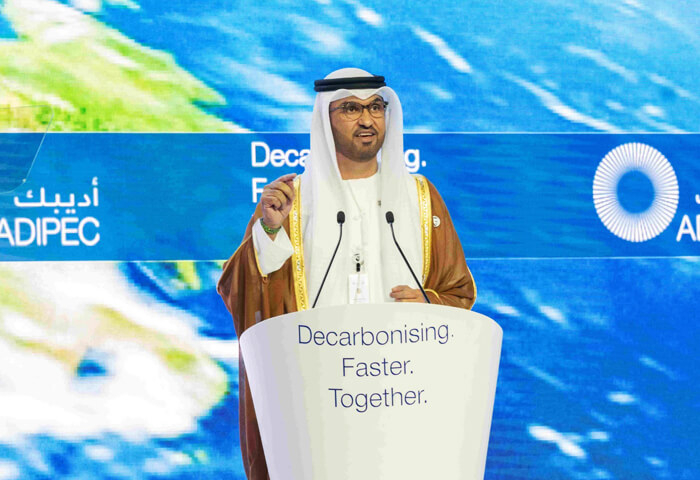The call for action comes from a diverse cross-section of stakeholders in the energy sector: international governmental organizations, producers, buyers, supply chain actors, civil society, environmental groups and youth. Around half of the signatories are based in the Asia-Pacific region, Africa and Latin America. They are united by the transformative impact of tripling renewable power capacity by 2030 across the world, and the critical moment presented by COP28 for world leaders to turn ambitions into genuine action to maintain a 1.5°C pathway.
Also read: UAE Affirms Readiness to Host COP28 as 100-Day Countdown Begins
According to the International Renewable Energy Agency’s World Energy Transitions Outlook (WETO) 2023, an immediate course-correction is needed in this decade to limit global warming to 1.5°C. This requires tripling of total global renewable power capacity by 2030 to at least 11,000 GW and doubling energy efficiency improvement rates. Around $4 trillion of annual investment in transition technologies would be needed to achieve the rapid deployment of wind, solar, hydropower, geothermal and other forms of renewable energy, which will lay the foundations for technologies such as green hydrogen and long-duration energy storage to scale up beyond 2030.
Also read: ADNOC to Build Landmark Carbon Capture Project as Part of $15 Billion Investment
The open letter, initiated by the Global Renewables Alliance, underscores that “a step change this decade in renewable energy growth, combined with an increase in energy efficiency, will be the fastest and most cost-efficient way to decarbonize the global economy. It is one of the most impactful commitments that the global community can undertake now to secure a liveable future for all.”
Major initiators, supporters and signatories of the letter include the Global Renewables Alliance members, IRENA, the COP28 Presidency, UNIDO, The Nature Conservancy, the Climate Group, American Clean Power, RE100, WBCSD, We Mean Business, REN21, RMI and corporate entities including Adani, AES, Amazon, Apple, CIP, CEPSA, Corio, DNV, ERM, EY, GCL, Google, Huawei, Microsoft, Ørsted, PepsiCo, ReNew, SSE, TES, Unilever and Vestas. Altogether, market value for publicly listed signatories exceeds $12 trillion - equivalent to the combined GDP of Japan, India and Germany.
Also read: Masdar and Africa50 Seek to Bridge Climate Finance Gap for Clean Energy
Francesco La Camera, Director-General of the International Renewable Energy Agency, said, “The business case for renewables has never been stronger. But we must urgently overcome the systemic barriers across infrastructure, policy, and institutional capabilities in the coming years and build a new energy system that is run on renewables.”
Bruce Douglas, CEO of the Global Renewables Alliance said, “It is imperative that we deploy the renewable industry’s solutions at scale today to make net zero by 2050 a reality and help deliver a clean, secure and just energy transition.”
Interestingly, according to Bain & Company’s Global Energy and Natural Resources report, only 43% of capital in the oil and gas sector was reinvested for growth in 2022, down from 58% in 2018. The mining sector reinvested 44% in 2022, down from 56%.
The report reveals that only 19% of energy and natural resource executives surveyed see capital scarcity as a barrier to scaling up low-carbon businesses. Their primary concerns are return on investment and customer willingness to pay, with 78% of executives selecting this as a top barrier to decarbonization.
The report also found that executives in the Middle East are optimistic about hydrogen and carbon capture with 67% of those expecting clean hydrogen to be a major growth vector.









